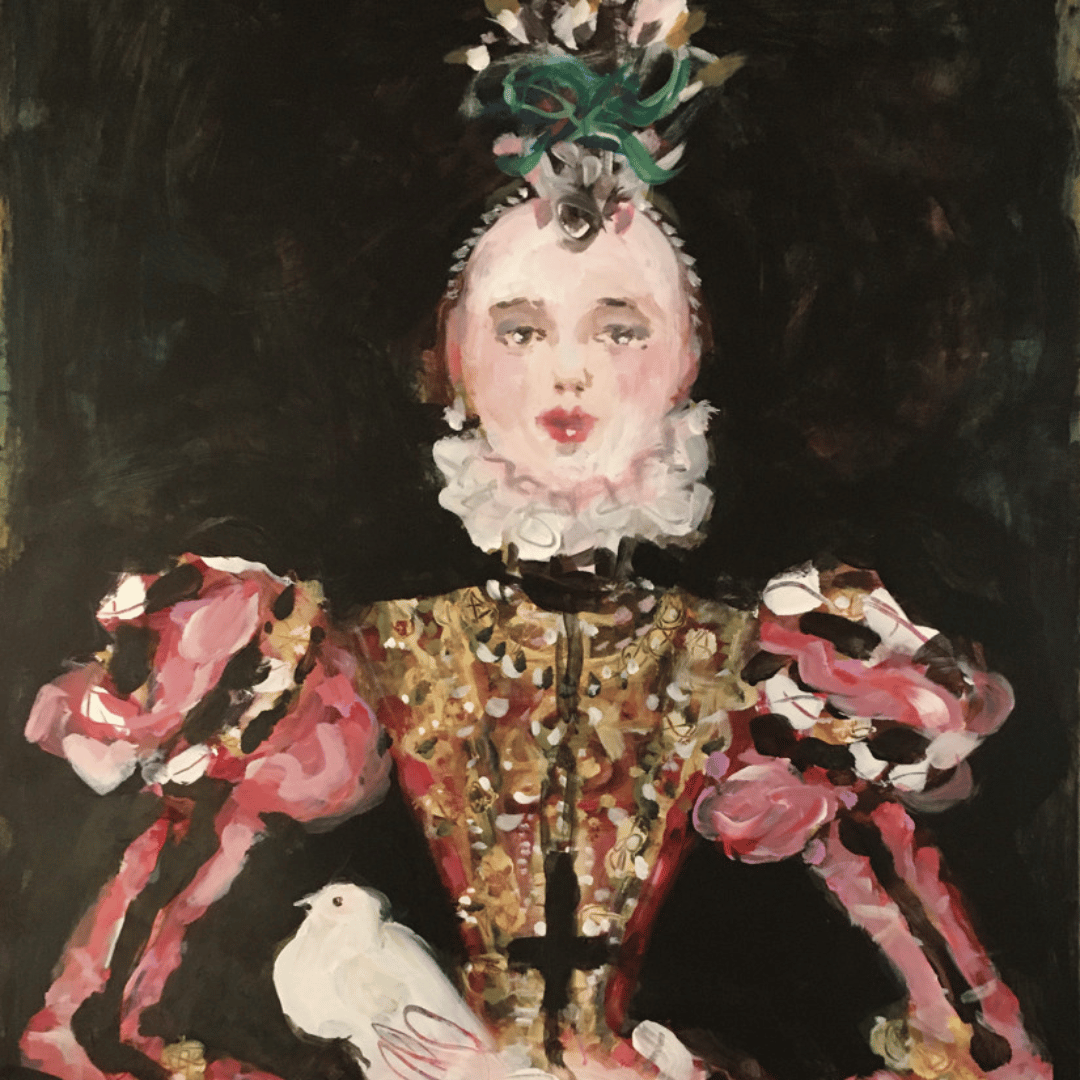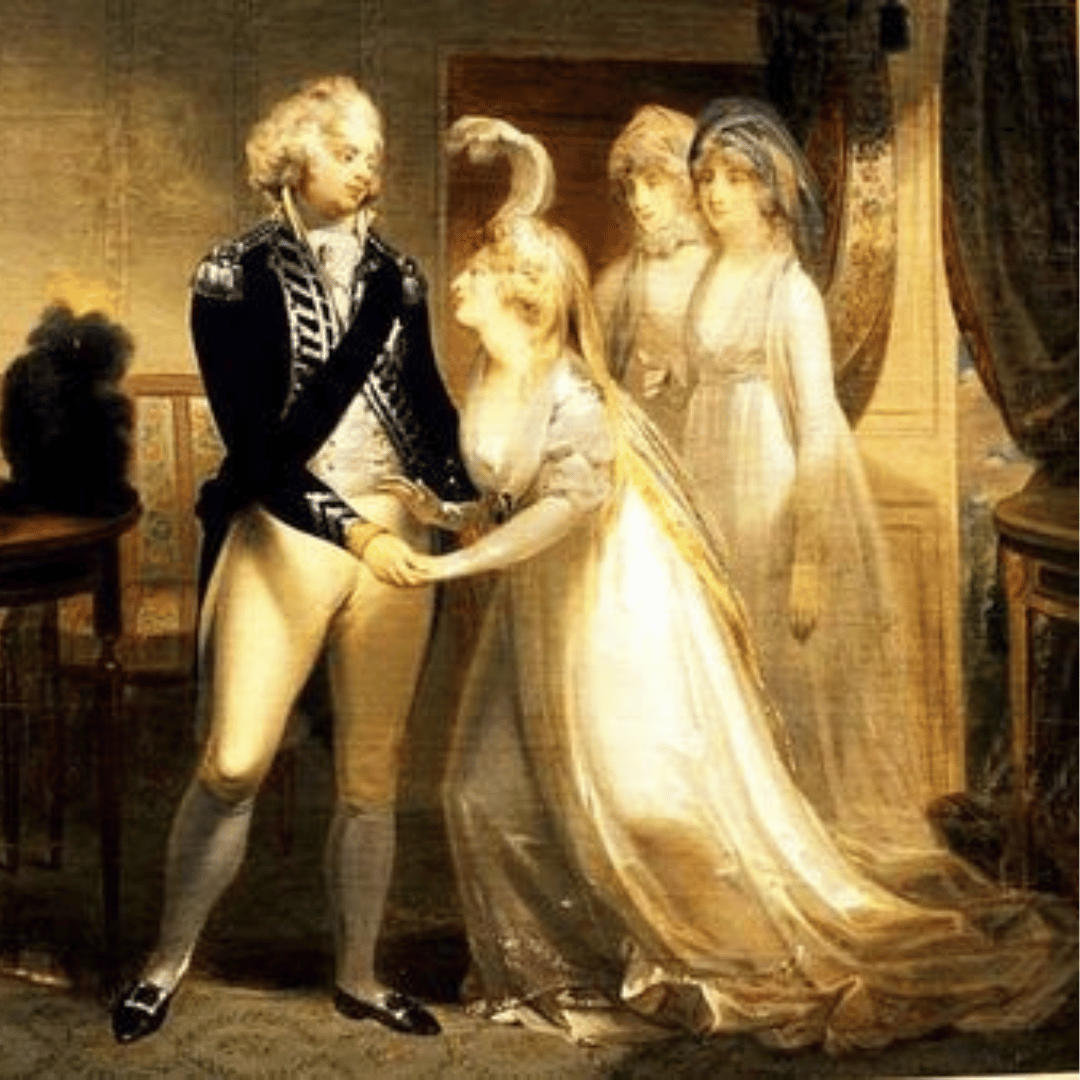
Miniature Portraits, La Princesse de Clèves, and the Rise & Fall of the Novel
There is a novel that is so well-known and canonical in France that young students throughout the country know it by heart, but you might never have heard of it. It’s called La Princesse de Clèves. Here's an illustration by none other than Christian Lacroix:

It was written in 1678 by a certain Madame de Lafayette, a novelist who wrote for the scintillating literary salons of the court of Louis XIV.

She was, to give more context, best friends with La Rochefoucauld, whose Maximes are quoted by pedants such as Frazier – but don’t let the current pretentiousness of quoting him deceive you into thinking La Rochefoucauld a musty, irrelevant moralizer, since his piquant, dry wit is just as relevant now as it was over 300 years ago.

Madame de Lafayette, for her part, is equally relevant to the modern world, although if La Rochefoucauld can be found amongst the leaves of our cultural tree then she is found in the roots. The Maximes stand alone and transcend time, in other words, whereas the real influence of La Princesse de Clèves is in the genealogy of the novel, and in particular the psychological novel.
The novel as she inherited it was built around plot: she built her novel around character. So whereas the picaresque adventure Don Quixote (1605) is called the first novel, La Princesse de Clèves (1678) is called the first modern novel.
So what’s the difference? The difference is that she uses episodes which are seemingly inconsequential to exhaustively explore the psychology of the Princess from as many angles as possible. As a result, the Princess becomes complex, inward, relatable, knowable, realistic, problematic, and fully human. Not only that, but knowing all the corners of the mind and the recesses of the heart in this way is not possible in real life with another person: it is only possible in the novel, where we have a strange sort of access. And interestingly enough, whereas La Princesse de Cleves was part of a trend of historical novels named after historical figures, and many of the characters in the novel have historic counterparts, the true identity of the Princess has never been identified and seems to have been an amalgam of possibilities enhanced by the imagination of Madame de Lafayette.
One of these scenes that would be so minor as to be unmentionable in another novel, involves a miniature portrait.
For background, the Princess is married young to the Prince of Cleves; she then falls in love with the charismatic rake, the Duc de Nemours, who is equally in love with her. Nothing ever happens – not so much as a kiss – but the chemistry, tension, and internal strife are incredible.

In one scene, the Duke slyly pockets a miniature which has just been painted of the Princess. Although she is smitten with him, she is determined to remain virtuous. She witnesses the theft but cannot accuse him publicly since then everyone at court would suspect her of having encouraged his advances. And she cannot accuse him privately since he would take advantage of the audience to finally proclaim his love, and so she in fact would have encouraged his advances.
Because she does nothing, the Duke then possesses a portrait he can take with him everywhere, gaze at, speak to, imagine looking back at him, dramatically weep over and press with kisses, and so on. It’s a little like Googling and checking out the Facebook and Instagram pages of someone you have a crush on, except in this world there are not thousands of images, there are one, maybe two, at most three images in existence. Furthermore, they’re not valueless collections of pixels that disappear and mean nothing, and they’re certainly not bestowed uniqueness by NFTs, but rather they’re unchanging, solid items of artistic worth and genuine economic value. In this world, the image of a beloved is more than a simple likeness: it’s a stand-in. When the Duke tucks the portrait into the folds of his doublet, it’s not a photograph, it’s not an iphone, it’s almost religiously, talismanically a part of the Princess herself that he holds as close to his beating heart as possible. The portrait is an object she held in her hands, and it’s an object that warms from the heat of his body and the ardor of his affection.
Back to the psychology. Having dodged the Scylla of accusing him publicly and the Charybdis of accusing him privately, she falls prey to a third psychological monster, since – here it gets complex – he knows she knows he took the portrait, and that means that he knows that she likes him back, and that means that she knows that he knows that she likes him back. She’s complicit. She can’t help it.
It gets more complex: her husband eventually knows the Duke stole his portrait, and he knows she knows the Duke stole his portrait, and the whole turns into a subtle, delicate, and dangerous web of restraint, guilt, desire, self-pity, and possession.
In a later scene, likewise involving a portrait – not a teensy miniature portrait but one of those whole-wall, floor-to-ceiling battle scenes – the Duke spies on the Princess through a window as she ties a ribbon on a cane he once owned and gazes upon his cameo in the victory party. (Women are miniatures; men are murals.) But there’s a spy spying on the Duke, and even though, again, nothing ever happens between the two lovers, the spy reports the visit to the husband, who imagines the worst and then dies of chagrin.

This, the first modern novel, relies on portraiture for its psychological complexity; the takeaway is mutual, since portraiture – especially, I think, miniature portraiture – relies on the novel. With the rise of the novel comes the rise of psychological complexity and inwardness, the rise of the religion of romance, and the rise of the prioritization of a certain kind of complex narrative of love.
And although the Prince dies, the Princess dies, and the Duc de Nemours is lonely, and I wouldn’t wish such ends on anyone, there’s something important and weighty that was created in the late 17th-century that we’ve lost. The novel has given way to Netflix, chaste longing has given way to meaningless promiscuity, and cherished portraits have given way to selfies.
How do we get back real, complex, interesting personhood?
Maybe it’s too late, but for my part I’m going to read more novels, and I’m going to paint more portraits.




Leave a comment
This site is protected by hCaptcha and the hCaptcha Privacy Policy and Terms of Service apply.